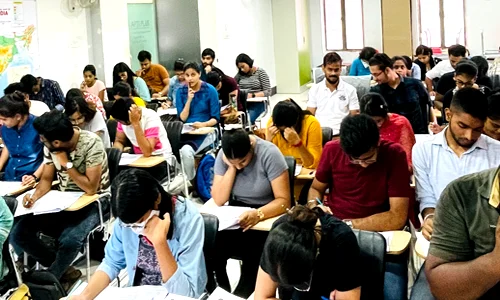



Acid attacks persist in India despite strong laws and Supreme Court directives. The failure lies in weak enforcement, unregulated acid sales, delayed compensation and poor rehabilitation. Addressing this crime demands strict implementation, speedy justice, survivor-centric rehabilitation and sustained efforts to challenge patriarchal attitudes.
Click to View MoreAcid attacks persist in India despite strong laws and Supreme Court directives. The failure lies in weak enforcement, unregulated acid sales, delayed compensation and poor rehabilitation. Addressing this crime demands strict implementation, speedy justice, survivor-centric rehabilitation and sustained efforts to challenge patriarchal attitudes.
Click to View MoreThe UMEED Portal aims to digitise and secure Waqf properties through geo-tagging and layered verification, replacing WAMSI. It seeks transparency, curbs encroachment and unlocks welfare potential. Success depends on resolving data gaps, uneven state implementation and strengthening State Waqf Board capacity.
Click to View MoreSurveillance apps are backfiring in welfare delivery. Tools like NMMS, Aadhaar authentication, and Poshan Tracker exclude beneficiaries, burden frontline workers, and threaten privacy. Effective governance needs stronger social audits, human oversight, and a culture of responsibility instead of techno-solutionism.
Click to View MoreThe Mahad Satyagrahas of 1927, led by Dr. B.R. Ambedkar, transformed a struggle for access to water into India’s earliest assertion of human rights and dignity. By challenging caste-based exclusion and burning the Manusmriti, the movement laid ethical foundations for equality, fraternity, gender justice, and constitutional morality. Its legacy shaped crucial constitutional principles, particularly Article 17, and continues to inform contemporary debates on democracy, rights, and social justice in India.
Click to View MoreDr. B.R. Ambedkar was a jurist, reformer, economist, and the chief architect of India’s Constitution who dedicated his life to securing equality and dignity for the marginalised. Rising from caste oppression, he shaped India’s democratic framework through fundamental rights, social justice provisions, labour reforms, and economic ideas that influenced institutions like the RBI. His conversion to Buddhism symbolised liberation from caste tyranny, and his legacy continues to guide movements for rights and inclusion. His death anniversary, observed as Mahaparinirvan Diwas, reflects the belief that he attained ultimate spiritual and social fulfilment.
Click to View MoreWorld AIDS Day highlights global solidarity and India’s ongoing efforts to control HIV/AIDS through expanded testing, rights-based laws, and wider ART access. India has reduced new infections and AIDS-related deaths significantly, yet challenges persist due to stigma, late diagnosis, treatment interruptions, and high-burden pockets such as the Northeast. Government initiatives under NACP, the “Test and Treat” policy, PMTCT, and Mission Sampark have strengthened prevention-to-care services. Moving forward, India must shift toward community-led systems, universal annual screening in high-risk districts, integrated HIV–TB–NCD care, and youth-focused prevention to accelerate progress toward ending AIDS as a public health threat by 2030.
Click to View MoreAssam passed the Prohibition of Polygamy Bill, 2025, criminalizing polygamy with strict penalties and overriding personal laws except for Sixth Schedule areas and STs. The law promotes women’s dignity, reinforces monogamy, and moves the state closer to the UCC framework, creating a national precedent.
Click to View MoreThe process for granting Scheduled Tribe (ST) status in India is a rigorous constitutional procedure. It requires state initiation, central approvals from the Ministry of Tribal Affairs, RGI, and NCST, and a parliamentary act. Outdated 1965 criteria from the Lokur Committee caused delays and controversy, necessitating urgent modernization for equitable and timely recognition.
Click to View MoreTelevision remains a powerful tool for inclusive education in India, offering curriculum-based learning through Doordarshan, PM e-Vidya channels, and SWAYAM Prabha. It proved indispensable during COVID-19 and continues to bridge digital divides by providing free, multilingual content accessible to millions of students nationwide.
Click to View MoreThe government removed 2.25 crore ineligible beneficiaries using Aadhaar-seeding and data analytics to curb leakage and improve targeting. The move supports fiscal prudence and Shanta Kumar Committee reforms but risks excluding deserving people, making strong grievance systems and an updated coverage cap essential to protect the right to food.
Click to View MoreThe full potential of Community Forest Rights under the FRA is stalled by departmental resistance, legislative dilution, and lack of community awareness, necessitating a mission-mode push with technology and coordinated governance to empower Gram Sabhas and correct historical injustices.
Click to View More
© 2025 iasgyan. All right reserved